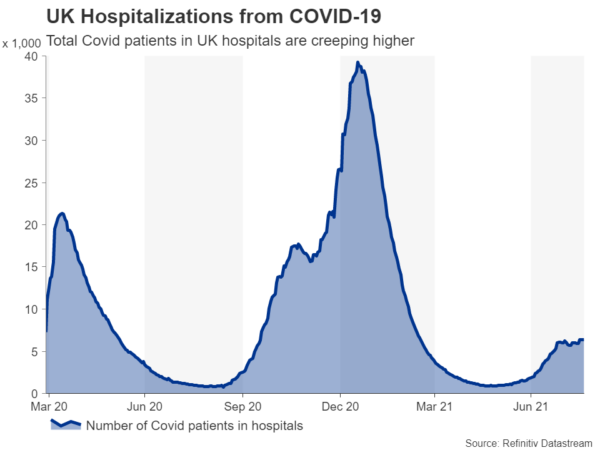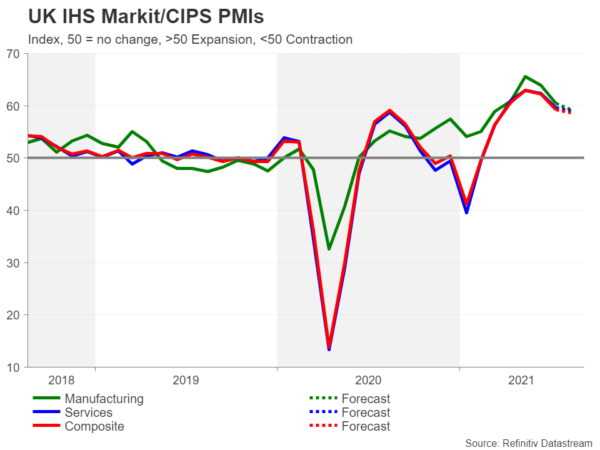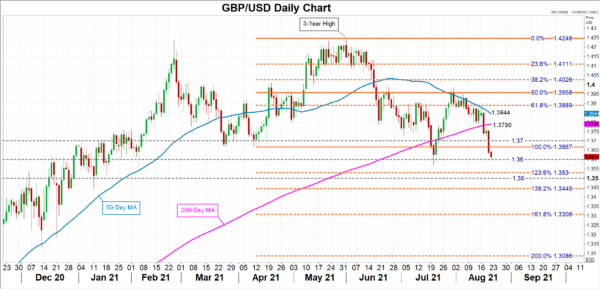It’s been a bruising week for sterling as investors have been selling riskier currencies and buying US dollars amid fresh jitters about the global growth outlook. A mixed bag of data out of the United Kingdom over the past week hasn’t helped matters for the pound and Monday’s flash PMI prints due at 08:30 GMT probably won’t either.
Delta scare wreaking havoc
The Delta variant has been front and centre for investors this week as its spread is showing no sign of receding. Countries that had managed to stay relatively virus-free this year have been plunged into lockdown, while those boasting high vaccination rates are seeing hospitalizations creep up. In the UK, which falls into the latter category and where the only restrictions kept in place are those on international travel, hopes were raised after the number of Covid patients in hospitals started to level off in late July but are now edging up again.
But that’s not the reason why the pound is falling as there’s no immediate prospect of the UK government changing its response to the Delta variant and reimposing some virus curbs. It’s the broader theme in global markets that’s weighing on the British currency, which tends to lose out at times of increased risk aversion due to the UK’s massive current account deficit that makes sterling more exposed to capital outflows.
UK recovery solid but slowing
Should the situation worsen to the degree where the government has no choice but to reintroduce restrictive social distancing measures, the currency’s losses could become even more dramatic. But for now, it’s mainly a dollar and risk-off story, which can also mean that the pound’s fortunes could easily turn around if sentiment were to improve.
Combined with some solid PMI readings, sterling could get a nice lift next week if the panic subsides. The flash estimates are expected to show the UK economy lost some steam in August but continues to grow at a healthy pace. The composite PMI is forecast to moderate from 59.2 to 58.7, with the services PMI expected at 59.0 and the manufacturing PMI at 59.3.
BoE tapering should support pound
However, that’s not to say that the pound’s woes won’t deepen if there is a negative surprise in the PMIs, as it would come hot on the heels of today’s retail sales figures, which showed an unexpected drop for July. The jobs data earlier in the week was much more encouraging and overall, the outlook for the UK economy remains positive, with the Bank of England widely anticipated to end its QE programme by the end of the year.
Tapering expectations should provide some support to cable as the latest risk-off drama plays out, and if the $1.36 level holds, pound/dollar could reverse higher. The key tests to the upside will come from the March/April lows around $1.3667, followed by the 50- and 200-day moving averages at 1.3844 and 1.3790, respectively.















